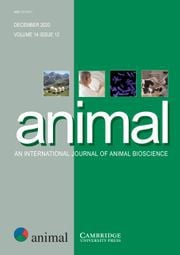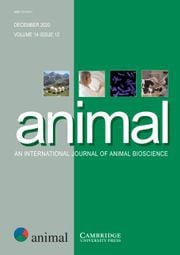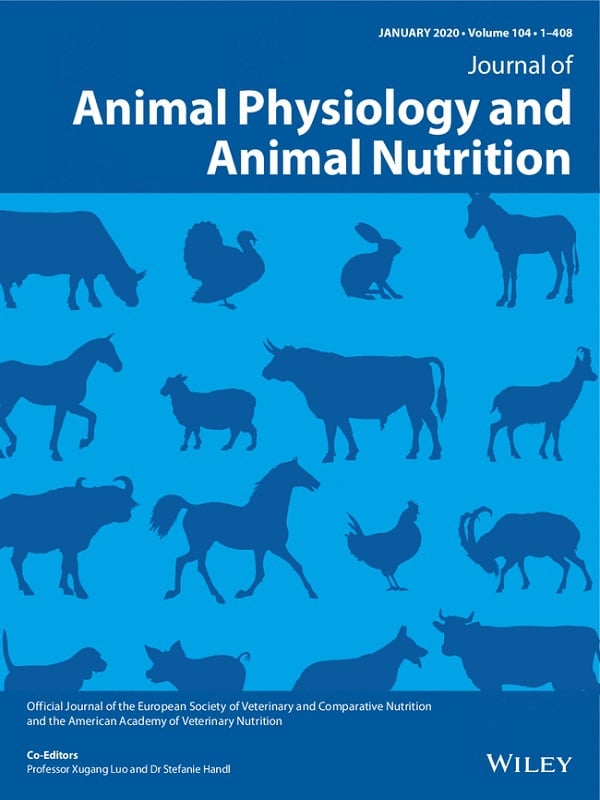
Trace mineral source influences digestion, ruminal fermentation, and ruminal copper, zinc, and manganese distribution in steers fed a diet suitable for lactating dairy cows
O. Guimaraes a, J.J. Wagner a, J.W. Spears b, V.L.N. Brandao c, T.E. Engle a
a Department of Animal Science, Colorado State University, Fort Collins, CO 80523, USA
b North Carolina State University, Raleigh, NC 27695, USA
c Micronutrients, Indianapolis, IN 46231, USA
- Ruminants
- Dairy
- 2022
- Open Access
J.J.Wagner, J.W.Spears, V.L.N.Brandao, T.E.Engle

Highlights
- Trace mineral source can affect nutrient digestibility and bioavailability.
- Ruminal fermentation characteristics were affected by trace mineral source.
- Fiber digestibility was reduced when sulfate trace mineral source was used.
- Hydroxy and organic trace mineral source may improve feed efficiency.
- Hydroxy source may have less antagonistic interactions and greater bioavailability.
Abstract
High solubility of certain trace minerals (TM) in the rumen can alter nutrient digestibility and fermentation. The objectives of the present studies were to determine the effects of TM source on 1) nutrient digestibility and ruminal fermentation, 2) concentrations of soluble Cu, Zn, and Mn in the rumen following a pulse dose of TM, and 3) Cu, Zn, and Mn binding strength on ruminal digesta using dialysis against a chelating agent in steers fed a diet formulated to meet the requirements of a high producing dairy cow. Twelve Angus steers fitted with ruminal cannulae were adapted to a diet balanced with nutrient concentrations similar to a diet for a high producing lactating dairy cow for 21 d. Steers were then randomly assigned to dietary treatments consisting of 10 mg Cu, 40 mg Mn, and 60 mg Zn/kg DM from either sulfate (STM), hydroxychloride (HTM) or complexed trace minerals (CTM). The experimental design did not include a negative control (no supplemental Cu, Mn, or Zn) because the basal diet did not meet the National Research Council requirement for Cu and Zn. Copper, Mn, and Zn are also generally supplemented to lactating dairy cow diets at concentrations approximating those supplied in the present study. Following a 14-d adaptation period, total fecal output was collected for 5-d. Following the fecal collection period, rumen fluid was collected for Volatile fatty acid (VFA) parameters. On the following day, the same diet was provided for 14 d, without supplemental Cu, Zn, and Mn. This period served as a wash-out period. A pulse dose of 100, 400, and 600 mg of Cu, Zn, Mn, respectively, from either STM, HTM, or CTM, was administered via ruminal cannulae to the steers on day 15. Over a 24-h period ruminal samples were obtained every 2-h. Following centrifugation, the supernatant was analyzed for Cu, Mn, and Zn. Ruminal solid digesta samples from times 0, 12, and 24 h after bolus dosing were exposed to dialysis against Tris-EDTA. Digestibility of NDF and ADF were lesser in STM vs. HTM and vs. CTM supplemented steers. Steers receiving HTM and CTM had greater total VFA concentrations than STM, and molar proportions of individual VFA were not affected by treatment. Ruminal soluble Cu and Zn concentrations were greater post dosing in STM and CTM supplemented steers at 2, 4, and 6 h for Cu and 4, 6, 8, 10 and 12 h for Zn when compared to HTM supplemented steers. The release of Cu and Zn from ruminal solid digesta following dialysis against Tris-EDTA at 12 and 24 h postdosing was greater for steers receiving HTM compared to those receiving STM or CTM. Results indicate trace mineral source impacts: 1) how tightly bound Cu and Zn are to ruminal solid digesta; 2) fiber digestion; 3) and ruminal total VFA concentrations.
Keywords
- Binding strength
- Bioavailability
- Cattle
- Fiber digestibility
- Mineral solubility
